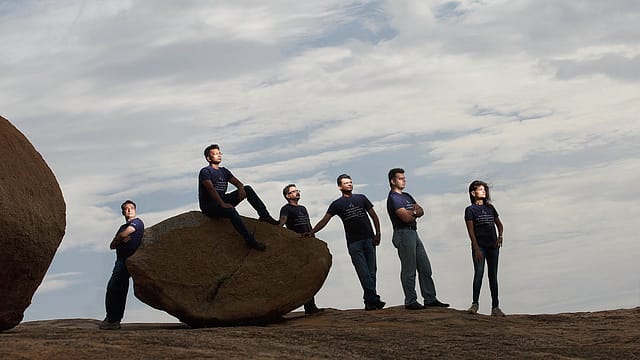TeamIndus: Still aiming for the moon
ADVERTISEMENT

India’s private sector moonshot, and the chance to fight for the $30 million Google Lunar XPrize, came to an end earlier this month when TeamIndus terminated its launch services agreement with Antrix, ISRO’s commercial arm. But finding a launch vehicle was not a problem restricted to the Indian startup. None of the five finalists could manage to launch before the deadline of March 31, so the competition was called off.
Rahul Narayan, co-founder, TeamIndus, now talks of the company’s plans for the future.
On the Google Lunar XPrize closing without any winners
It was disappointing from my perspective but when I look at it from their perspective I think it was almost a given simply because this was a competition which was more than 10 years old. TeamIndus was just about completing seven years in the competition. For them, the fact that they did not have a defining fixed date to extend to made it just not tenable to try and extend it any further. They didn’t want to say: ‘okay another three months’, and still nobody does it.
Having said that, we have a great relationship with them. We have spoken about it, we have met, we spoken about it after the announcement. It was a very cordial, well-managed way of handling this
On the Google Lunar XPrize team
They feel that some of the five remaining teams reached a certain level of maturity. I feel that we have probably reached the maximum level of maturity out of all the teams there. They are very keen to continue supporting this in other ways like making industry connections, trying to see if they can help teams find sponsors, and a whole bunch of activities that they have committed that they will attempt do. There are obviously no contractual obligations for them to deliver anything to us.
January 2026
Netflix, which has been in India for a decade, has successfully struck a balance between high-class premium content and pricing that attracts a range of customers. Find out how the U.S. streaming giant evolved in India, plus an exclusive interview with CEO Ted Sarandos. Also read about the Best Investments for 2026, and how rising growth and easing inflation will come in handy for finance minister Nirmala Sitharaman as she prepares Budget 2026.
Space continues to be one of the toughest domains to get into from an execution perspective. They have said that they might design some kind of a space prize going forward. They are going to try but there are no commitments from them. We are not waiting for them to come up with a prize, that would be unfair. We are making our own plans. The prize money even if it were to come, would have come after we finished the mission, and all our expenditure was before. So, we are making our own plans, not only to land on the moon, but to take the capability and leverage it into the future.
From a capability perspective, with the capacity that we have built, the team that we have, and the technology we have, we believe we could launch in the next 10-12 months, and do that well, and go back and do it multiple times and have a commercial venture. That is one the things that we are looking at, going forward
On the next steps for TeamIndus
We see the moon mission being our flagship programme. A lot of technology that we have built, a lot of relationships that we have, a lot of equipment that we have, is geared towards delivering payload for space. The first mission that we intend to do, we could not do this it in this timeline. We are working towards carrying more scientific payload next time. In my experience of the last six months, I think there is tremendous interest in the global scientific community to do more science on the surface of the moon.
There are also other engineering or aerospace companies which are looking to step things up in space. They don’t have a delivery capability; what they have is an experiment or they have the technology or there are things that they want to do in deep space or on the surface of the moon. We believe those are customers that we will work with.
There are also government space agencies looking to go back to the moon, looking to explore the moon. These are the constituencies that we will look to connect with, to work with, and to better understand how can we better serve their needs, and how can we tailor our spacecraft, our research mission and infrastructure to serve those requirements.
On government support
I am sure a lot of things could have gone slightly differently and a small nudge here, a small nudge there could have helped us meet the deadline. Given the level of risk involved, given the level of complexity involved, we as a team will need to do more to win the confidence of people who can be our customers and our supporters. And that’s something we work on, we have been working on.
On raising funds
We have a strategy, which basically talks about commercialising our capabilities and flying more commercial payload on board. We have close to 10 experiments at this point, we have got $8-9 million worth of payload that is going on board, we are trying to sell more of that. That’s one of our revenue streams. The second is equity financing, because we are not looking at a single shot thing anymore. We are looking for something over four or five years.
That’s the strategy. We are going to talk to a group of equity investors who are looking to support the next generation of innovators. We have time to grow, to mature, and I think there will be interest from equity investors to partner with us.
